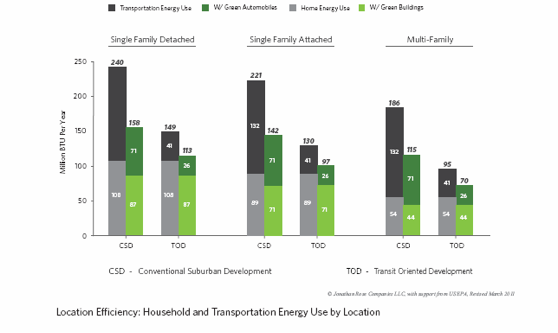Who would have thought backyards would cause so much trouble for the North American energy industry? First came the NIMBYs, the not-in-my-backyard protesters who block power projects from being built near them. And now we have the GIMBBYs – the give-me-a-bigger-backyard homeowners who are unwittingly getting in the way of energy efficiency.
GIMBBYs aren’t worried about seeing wind turbines or transmission lines from their backyards as are the NIMBYs. It’s the guy next store that they don’t want to see. And GIMBBYs number many among us. A recent study conducted for the National Association of Realtors found privacy to be very important in selecting a home for nearly half of the Americans surveyed.
What’s this got to with energy efficiency? To gain privacy we move to homes that are further from work, schools and stores, suburban and rural outposts that offer us bigger backyards. By way of disclosure, before I go any further let me confess that I am a GIMBBY. I’d probably give up my lights, heat and air conditioning before my five acres of trees shielding me from others.
The Environmental Protection Agency calls big-backyard neighborhoods like mine “automobile dependent locations” and contrasts them with “transit-oriented” neighborhoods, places where you can hop a bus or easily walk to regular destinations. The agency recently looked at which kind of neighborhood uses the most British Thermal Units (BTUs), taking into account size and type of house, its energy efficiency, and vehicle use of its occupants. This is known as Location Efficiency.
The EPA’s findings indicate that location really is everything. Transit-oriented neighborhoods offered up more energy savings whether the houses were single family detached, single family attached or multi-family. This is significant because homes that share walls typically require less energy for heating and cooling. But that advantage was not significant enough to overcome driving distance for the big-backyard neighborhoods. Travel requirements pretty much trumped all, indicating that a home’s location is “a major variable for household energy consumption,” the EPA said.
“The takeaway here is that a location-efficient future does not necessarily mean a world of only multifamily housing. Far from it, location efficiency can enable greater housing choices, access to services, and more transportation options,” said Eric Mackres, communities program manager for the American Council for an Energy Efficient Economy in his blog.
So should all of us GIMBBYs pack up and move to the city? Clearly, that’s not going to happen. But our current housing development slump gives us time to reflect on how to design neighborhoods for the future. The graying of America is leading to an increasing number of childless households. And as the EPA study points out, these retirees often show a preference for “more walkable, vibrant urban places.” Demand will still exist for suburban homes with big backyards, but that demand is decreasing. So we may be entering a rare period when maximum energy efficiency and consumer desire go hand and hand. We may not have to look far afield to achieve significant energy savings; the answer might be in our backyards.
Elisa Wood’s white paper, “Exporting US Energy Efficiency,” is available atwww.RealEnergyWriters.com.






No comments:
Post a Comment